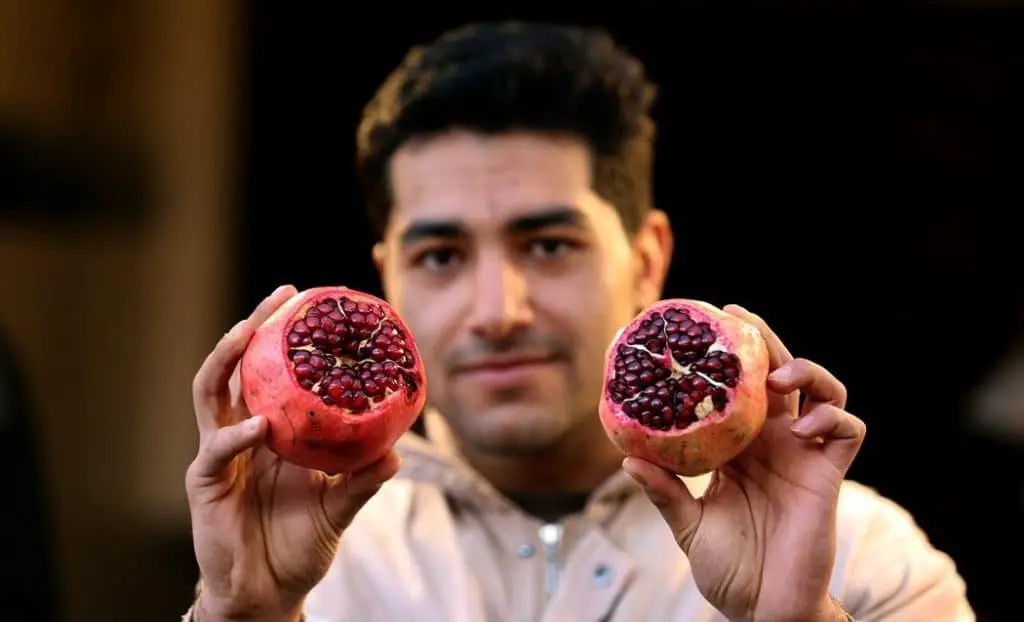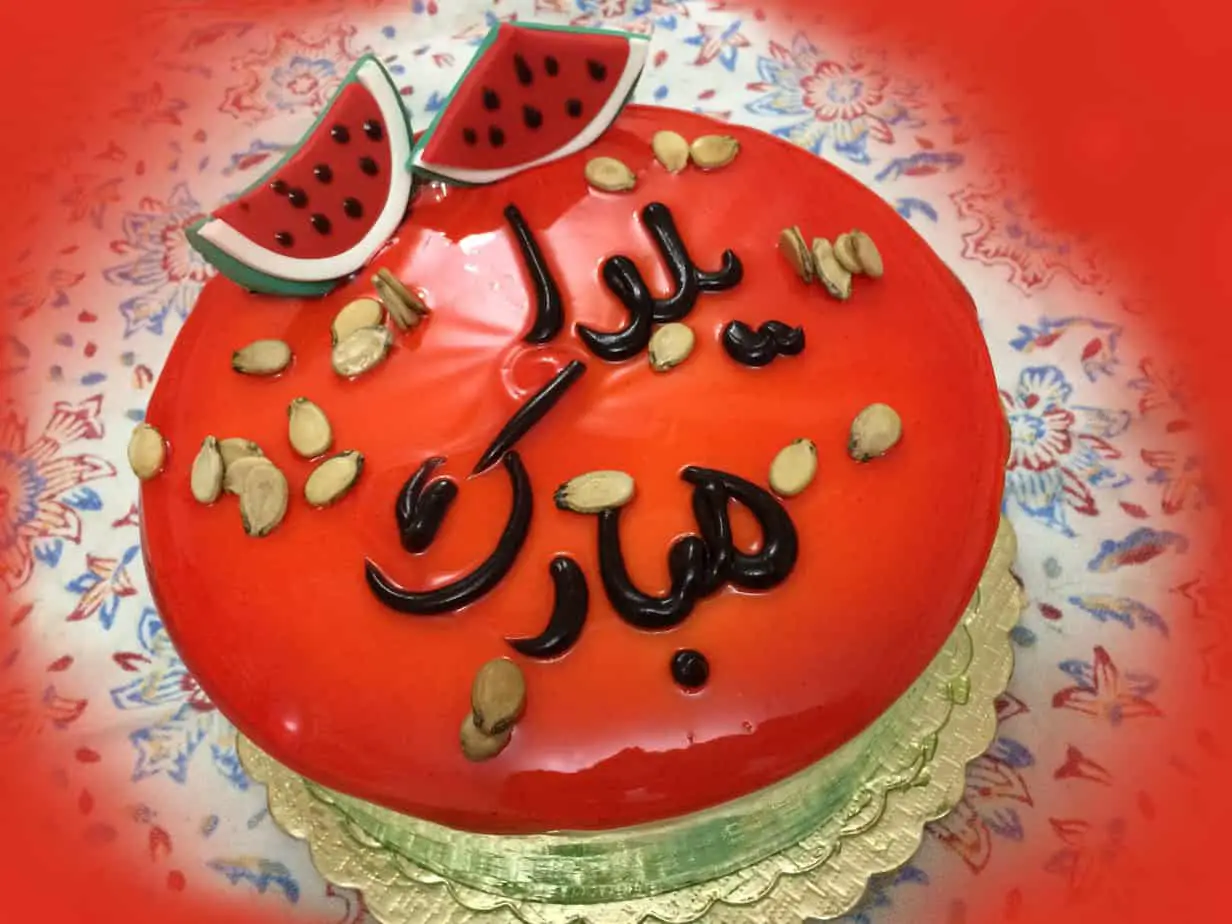What is Yalda?
Also known as Shab-e Chelleh, Yalda is an Iranian celebration of the longest night of the year, the winter solstice. This is one of the oldest Persian festivals. It falls between the 20th and 21st of December according to the Georgian calendar. It symbolizes the arrival of winter, the rebirth of the sun and finally, the victory of light over darkness.
Yalda literally translates to “birth” in Persian. It describes the ancient belief that on this night the goddess of light, Mithra, was born. As it is the darkest and longest night, it also symbolizes many other things in Persian poetry. These include loneliness, waiting, and separation from loved ones. Once Yalda passes, the waiting is also completed, with the light finally taking charge of the world.
According to most stories, this festivity takes its roots from Persian Zoroastrian tradition. The people in those times believed that the sun and light were symbols of God, while darkness represented the evil on earth. Therefore, longer days meant that God triumphed over the evil, and consequently, the days grew longer and the nights shorter.
Although most widely observed in Iran, some other nearby countries also celebrate Yalda, including Afghanistan, Tajikistan, Uzbekistan, and Armenia.
Ancient Traditions
In the old times, when Zoroastrian tradition still prevailed in Persian countries, the darkest night of the year was seen as ominous. The festivities kept people safe from evil on the earth. Namely, they were afraid of the forces of Ahriman who were the predominant rulers of the night.
To guard against these evil forces, people gathered in the safety of their loved ones, staying awake all night and sharing the last fruits from the summer. The company of their family and relatives comforted them and help them to endure staying awake the whole night.
Modern Traditions
Although the significance of the Yalda is no longer as tremendous as it was in the old days, the traditions still take place until this day.
When the rest of the world is decorating streets with Christmas lights, Iranians prepare to reunite with their families to spend Yalda together. This usually occurs in their grandparents’ homes where they gather to eat, drink, and read poetry to spend the darkest night of the year in fun and laughter.

Food
Like in most other cultures, Iranian holidays also center around traditional delicacies. The main food of the Yalda evening is fruit. Iranians believe those who eat summer fruits in the first night of winter will not get ill during the cold days. Pomegranates and watermelons are especially valuable because they have a deeper meaning along with their sweet taste.
Pomegranates are usually placed on the top of a fruit basket. They serve as a reminder of the cycle of life and rebirth, or revival of generations. The outer covering of this fruit symbolizes birth, while the red seeds mark the glow and beauty of life.
Watermelons, on the other hand, are a symbol of the sun because of their spherical shape. They sit on top of the tables. Persians eat watermelon more than any other fruit as it’s believed that they are the most potent when it comes to treating diseases. Iranians decorate these fruits in different styles to add more light to the night.
Although fruits have the most significant meaning on Yalda night, treats are not the only thing Iranians eat at this time.
Like Christmas turkey on the west, Persians also have their traditional dinner. In the northern part of Iran, they will usually serve sabzi polo which is a dish that combines rice, chopped herb, and smoked fish. In Shiraz, they will make a similar dish, but they will serve it with roasted saffron and lemon chicken instead.
There are many other variations of this meal all over Iran, which combined with dried nuts, watermelons, and pomegranates, make for a delightful and joyful evening.
Praying and Poetry
Besides food, Iranians mark Yalda night with joint recitals and prayers. The oldest member of the family will usually say the prayers. This person expresses gratitude to God for the prior year and asks for God’s blessing for the year ahead. After completing the prayer, other members of the family will raise their hands and respond with “Ameen.” The elder will then cut the watermelon — a symbolic act to eliminate pain and sickness from all present members.
One of the oldest traditions related with Yalda was created to help to pass the night, and it revolves around the book of great Persian poet Shamsu d-Din Muhammad Hafez-e Shirazi, commonly known as Hafez.
He wrote these poems back in the 14th century. Each member of the family will make a wish, and open a random page in the book, giving it to the oldest member to read. Some believe that the poem one chooses directly corresponds to his or her wish. It reveals whether it will come true and how it will be received.
Unlike Christmas, Yalda usually doesn’t focus on presents. Some cases do have this tradition though. Specifically, one of them includes young engaged couples. During Yalda night, the fiance will send a basket with fruits and gifts to his future wife. In some parts of Iran, the girl’s family will return the favor and send a present back to her fiance.
Looking for Persian Christmas Gits?
Read our blog posts to find some unique ideas!
What does Yalda look like in Iran?
Watch the video below to see how Iranians celebrate Yalda. You can see an Iranian market where people are buying fruits and nuts as well as a how typical family gathers to celebrate Shab-e Chelleh.
How Can You Celebrate Yalda in the United States?
If you want to take part in this ancient tradition and celebrate Yalda in the US, you can do so in several major cities.
For instance, the Farhang Foundation in Los Angeles organizes Shab-E Yalda in the Schoenberg Hall, where they focus on storytelling as told by the Official Gordafarid. These tales, backed with beautiful ancestral Iranian music, create a truly memorable atmosphere.
The Iranian American Society of New York also organizes their Yalda festivities. They take place in Leonard’s Palazzo, where you can enjoy a combination of polka music, reading of Hafez poetry, and a delicious, traditional dinner.
The Iranian Federated Women’s Club (IFWC)/Payvand will host “Shab e Yalda” the Longest night of the year (Winter Solstice) in Cupertino, CA.
These events are directed toward Iranian expatriates in the US, but everyone can join in to learn more about Persian culture and joyfully prepare for the rebirth of Mirtha.


Brilliant post. There is also this wonderful party coming up, in case anyone wants to come and celebrate:
https://twitter.com/laylasabourian/status/1072524777309569024
Layla,
Thank you for sharing this event! I’m adding it to our post.
Feel free to email us about any other Persian events.